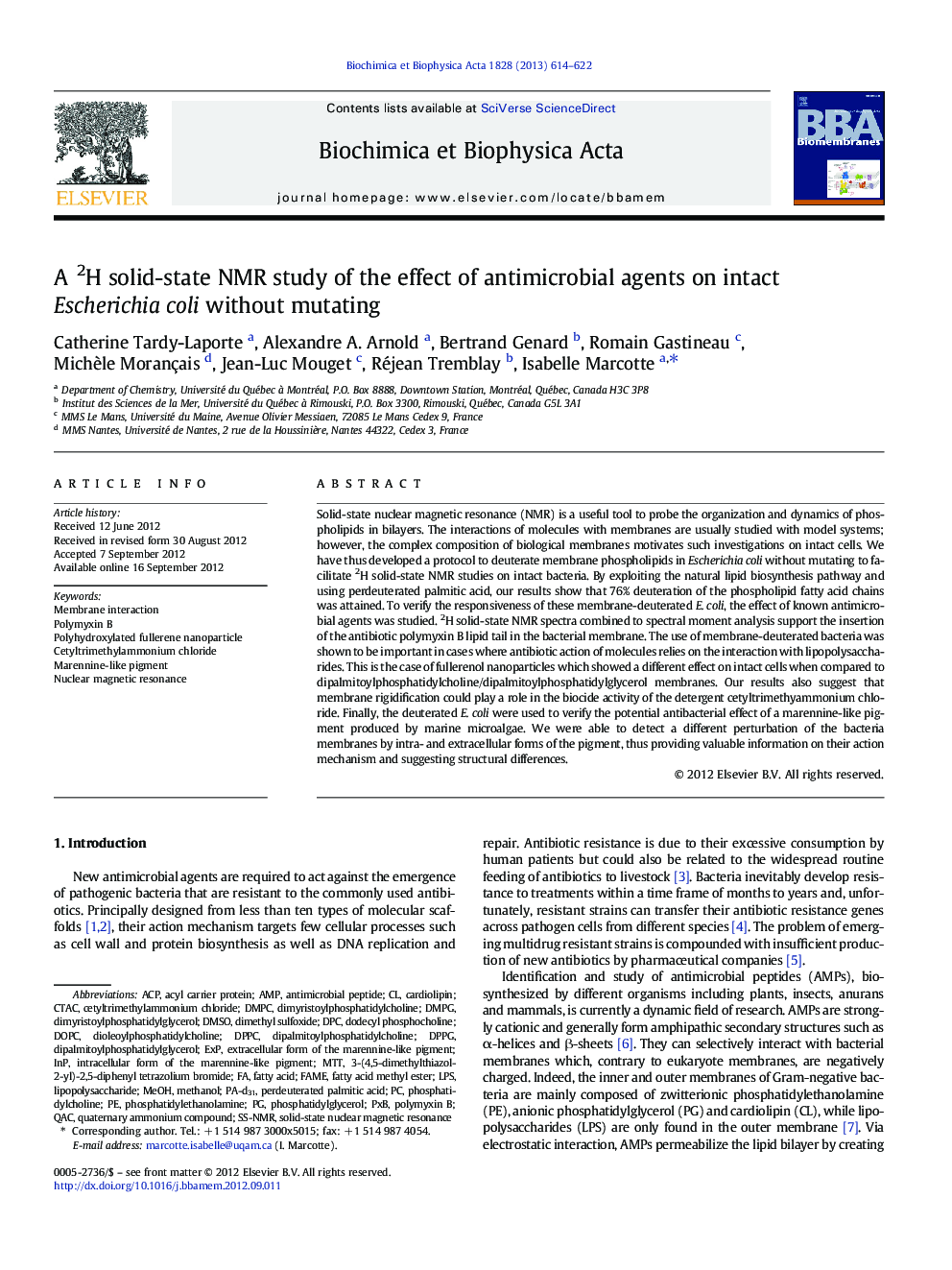| کد مقاله | کد نشریه | سال انتشار | مقاله انگلیسی | نسخه تمام متن |
|---|---|---|---|---|
| 1944399 | 1053210 | 2013 | 9 صفحه PDF | دانلود رایگان |

Solid-state nuclear magnetic resonance (NMR) is a useful tool to probe the organization and dynamics of phospholipids in bilayers. The interactions of molecules with membranes are usually studied with model systems; however, the complex composition of biological membranes motivates such investigations on intact cells. We have thus developed a protocol to deuterate membrane phospholipids in Escherichia coli without mutating to facilitate 2H solid-state NMR studies on intact bacteria. By exploiting the natural lipid biosynthesis pathway and using perdeuterated palmitic acid, our results show that 76% deuteration of the phospholipid fatty acid chains was attained. To verify the responsiveness of these membrane-deuterated E. coli, the effect of known antimicrobial agents was studied. 2H solid-state NMR spectra combined to spectral moment analysis support the insertion of the antibiotic polymyxin B lipid tail in the bacterial membrane. The use of membrane-deuterated bacteria was shown to be important in cases where antibiotic action of molecules relies on the interaction with lipopolysaccharides. This is the case of fullerenol nanoparticles which showed a different effect on intact cells when compared to dipalmitoylphosphatidylcholine/dipalmitoylphosphatidylglycerol membranes. Our results also suggest that membrane rigidification could play a role in the biocide activity of the detergent cetyltrimethyammonium chloride. Finally, the deuterated E. coli were used to verify the potential antibacterial effect of a marennine-like pigment produced by marine microalgae. We were able to detect a different perturbation of the bacteria membranes by intra- and extracellular forms of the pigment, thus providing valuable information on their action mechanism and suggesting structural differences.
Figure optionsDownload high-quality image (204 K)Download as PowerPoint slideHighlights
► A protocol was developed to deuterate membrane phospholipids in E. coli without mutating.
► This protocol facilitates 2H solid-state NMR studies on intact bacteria.
► The action mechanism of PxB, fullerenol and CTAC on intact bacteria is studied.
► A different action mechanism is shown for two forms of a microalgal bioactive pigment.
Journal: Biochimica et Biophysica Acta (BBA) - Biomembranes - Volume 1828, Issue 2, February 2013, Pages 614–622